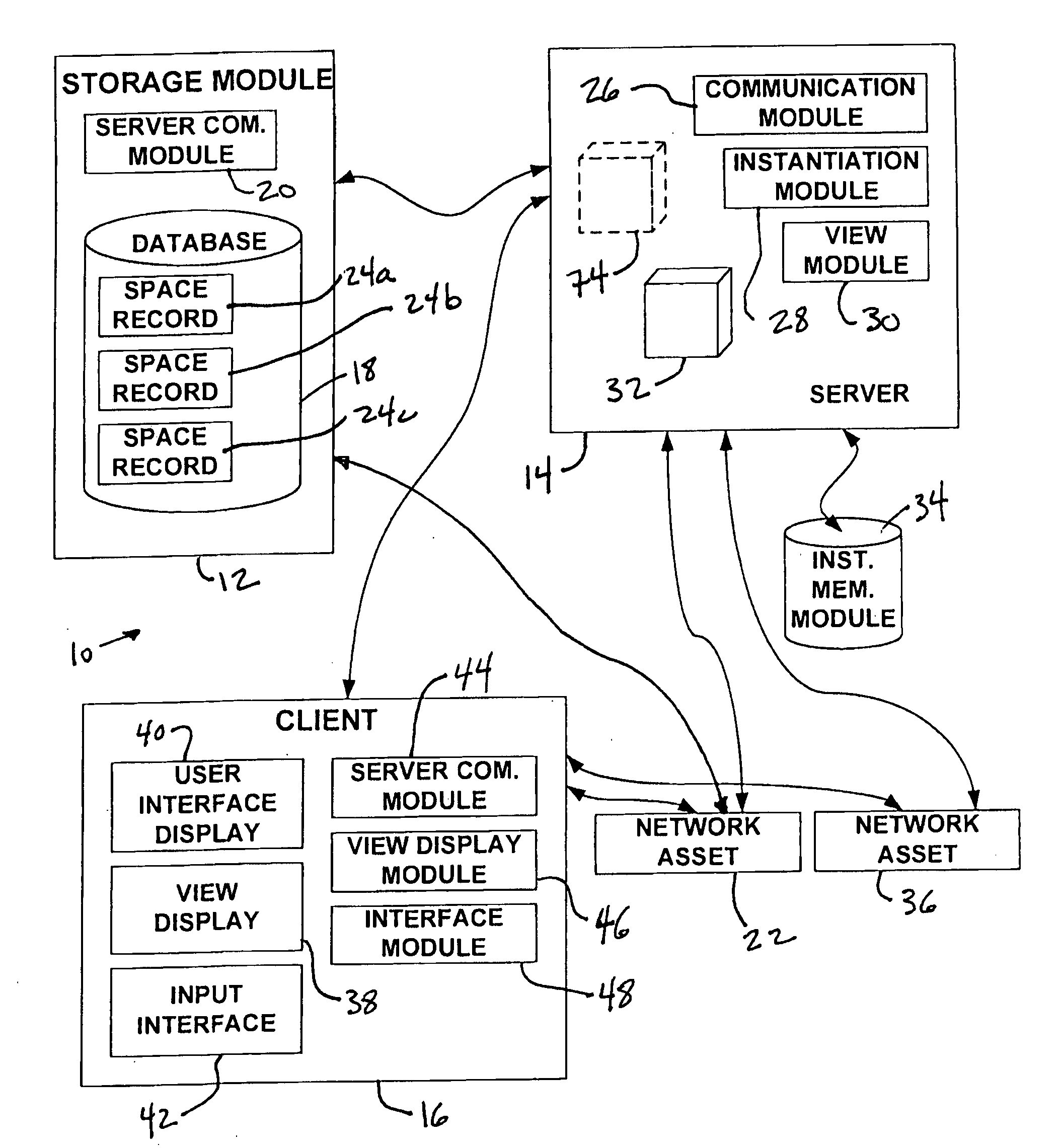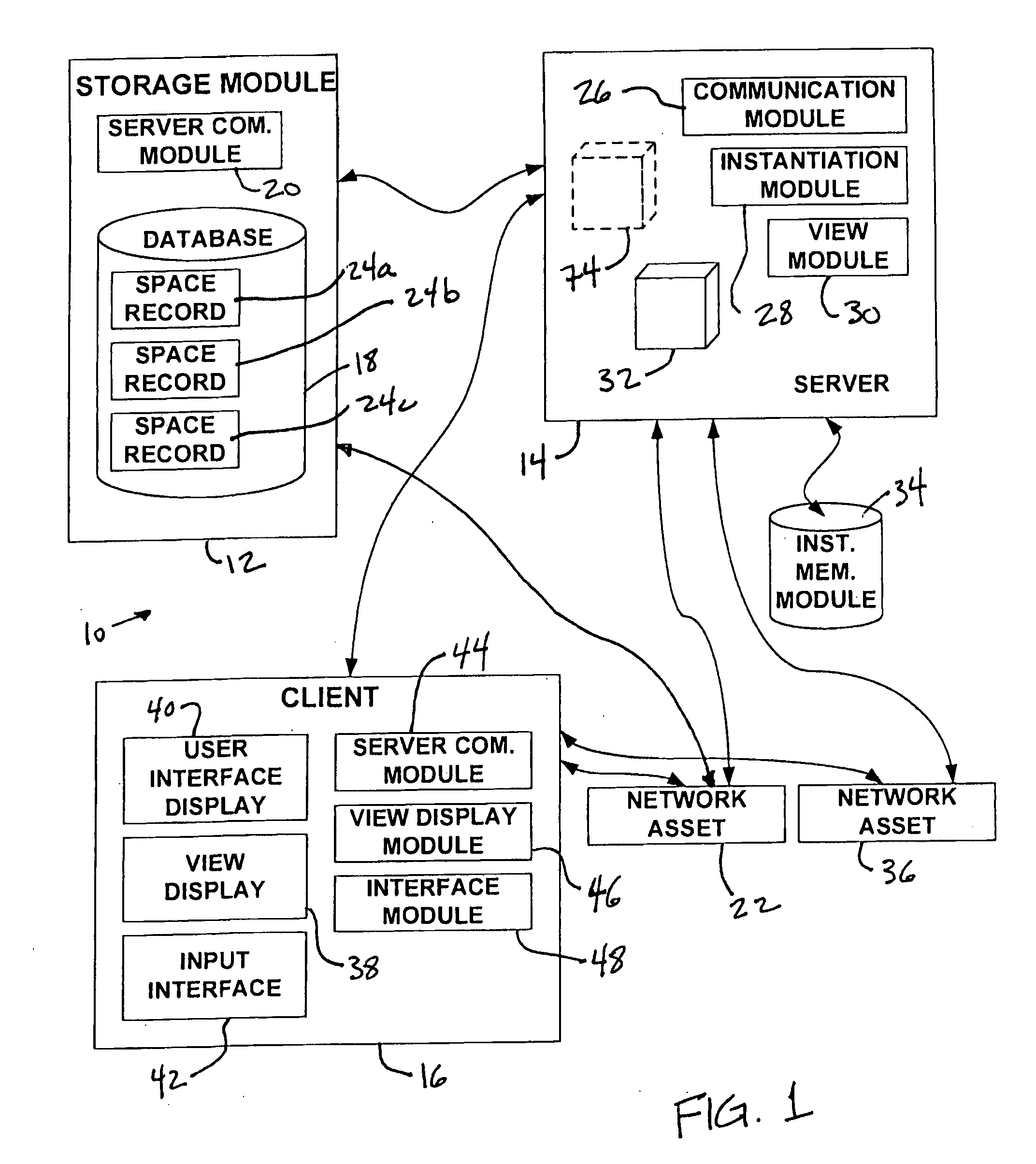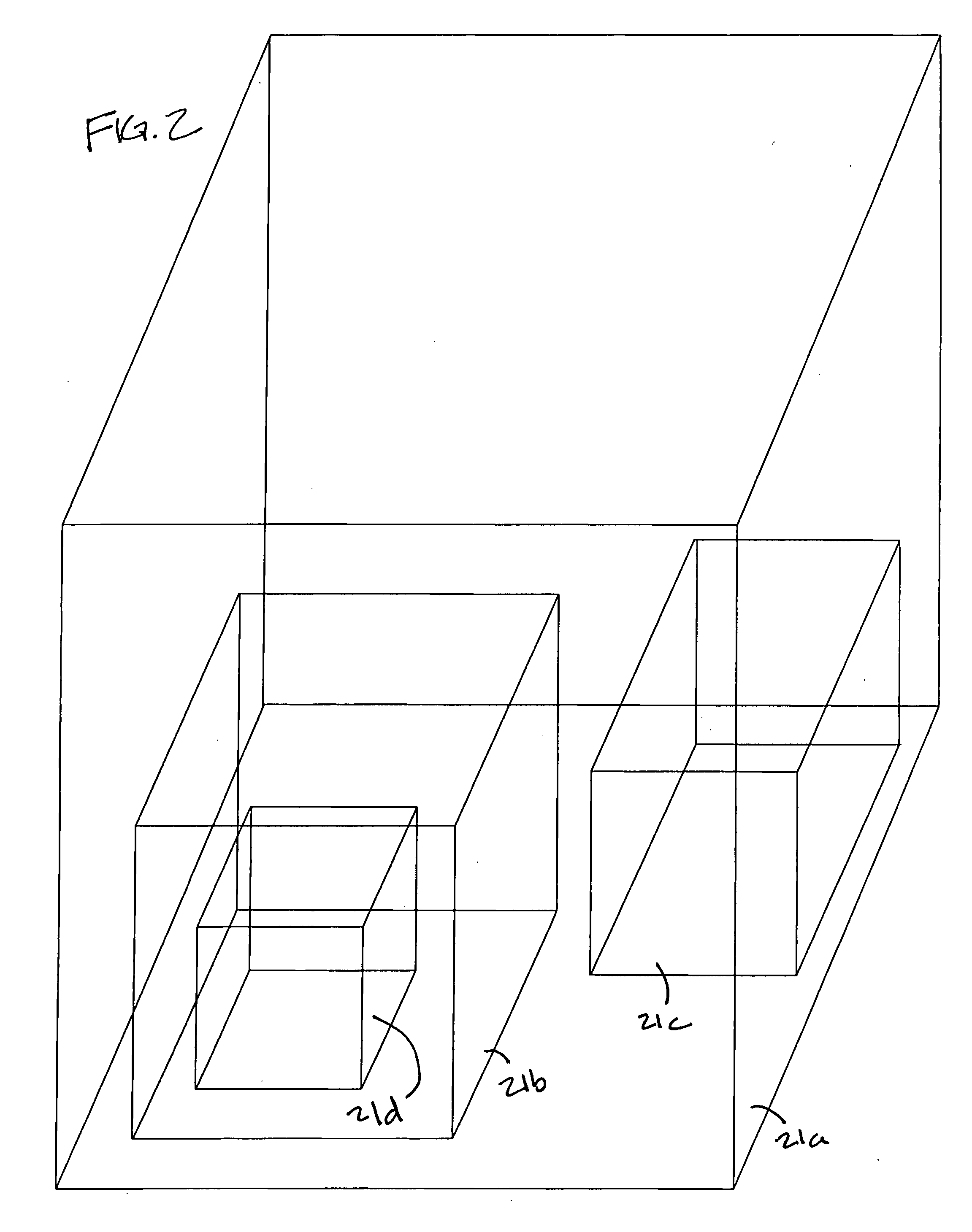[0005]The
system, in part by virtue of its flexibility, may enable enhanced customization of a virtual space by a user. For example, the
system may enable the user to customize the characteristics of the virtual space and / or its contents. The flexibility of the components of the system in providing various types of virtual spaces with a range of possible characteristics may enable users to access virtual spaces from a broader range of platforms, provide access to a broader range of virtual spaces without requiring the installation of proprietary or specialized
client applications, facilitate the creation of virtual spaces, and / or provide other enhancements.
[0006]According to various embodiments, at least some of the communication between the components of the system may be accomplished via a markup language. The markup language may include the transmission of information between the components in a markup element format. A markup element may be a discrete unit of information that includes both content and attributes associated with the content. The markup language may include a plurality of different types of elements, that denote the type of content and the nature of the attributes to be included in the element. In some implementations, content within a given markup element may be denoted by reference (rather than transmission of the actual content). For example, the content may be denoted by an access location at which the content may be accessed. The access location may include a
network address (e.g., a URL), a
file system address, and / or other access locations from which the component receiving the given markup language may access the referenced content. The implementation of the markup language may enhance the efficiency with which the communication within the system is achieved.
[0008]By virtue of the richness of communication between the components of the system (e.g., in the markup language), information may be transmitted from the storage module to the
server that configures the
server to instantiate the virtual space at or near the time of instantiation. The configuration of the server by the information transmitted from the storage module may include providing information to the server regarding the
topography of the given virtual space, the manner in which objects and / or unseen forces are manifested in the virtual space, the perspective from which views should be generated, the number of users that should be permitted to interact with the virtual space simultaneously, the dimensionality of the views of the given virtual space, the passage of time in the given virtual space, and / or other parameters or characteristics of the virtual space. Similarly, information transmitted from the server to the
client via markup elements of the markup language may enable the client to generate views of the given virtual space by merely assembling the information indicated in markup elements. The implementation of the markup language may facilitate creation of a new virtual space by the user of the client, and / or the customization / refinement of existing virtual spaces.
[0011]The parameters of the acoustic areas within the hierarchy of acoustic areas may be customized by a creator of the virtual space and, in some cases, may be interacted with by a user
interfacing with the virtual space. The hierarchy of acoustic areas may enable sound within the virtual space to be modeled and / or managed in a realistic, and / or intuitive manner. For example, if the virtual space includes an enclosed
public place (e.g., a restaurant, a bar, a shop, etc.), an
enclosure that surround (or substantially surrounds) the enclosed
public place may form a superior acoustic area within the hierarchy of acoustic areas. Within this superior acoustic area, a plurality of subordinate areas may be propagated (e.g., at the various tables within a restaurant, at the cash register in a shop, etc.). Further, within these subordinate areas, further subordinate areas may be formed (e.g., individual conversations at a table or cash register, etc.). The acoustic areas within the hierarchy may be configured such that sounds generated within the most subordinate area (e.g., an individual conversation) may be “in focus,” or amplified the most in relation to sounds generated outside the subordinate acoustic area, when the virtual space is conveyed to the user. This may enable the user to pay increased attention to this most intimate level of conversation, while still being able to monitor sounds generated outside the subordinate acoustic area as background. In some implementations, the user may be enabled to adjust the relative levels at which sounds inside and outside the subordinate acoustic area are amplified, or the user may even be able to select another acoustic area for primary amplification (e.g., to listen to a conversation at the lowest level as only
background noise while focusing on some superior area of this subordinate area).
[0013]The server may include a communication module, an instantiation module, and a view module. The communication module may receive the markup elements from the storage module associated with a given virtual space. Since the markup elements received from the storage module may comprise information regarding substantially all of the characteristics of the given virtual space, the instantiation module may execute an instance of the given virtual space without making assumptions and / or calculations to determine characteristics of the given virtual space. As has been mentioned above, this may enable the instantiation module to instantiate a variety of different “types” of virtual spaces without the need for a plurality of different instancing applications. From the instance of the given virtual space executed by the instantiation module, the view module may determine a view of the given virtual space to be provided to a user. The view may be taken from a point of view, a perspective, and / or a dimensionality dictated by the markup elements received from the storage module. The view module may generate markup elements that describe the determined view. The markup elements may be generated to describe the determined view in a manner that accommodates one or more limitations of the client that have previously been communicated from the client to the server. These markup elements may then be communicated to the client by the communication module.
 Login to View More
Login to View More  Login to View More
Login to View More 


